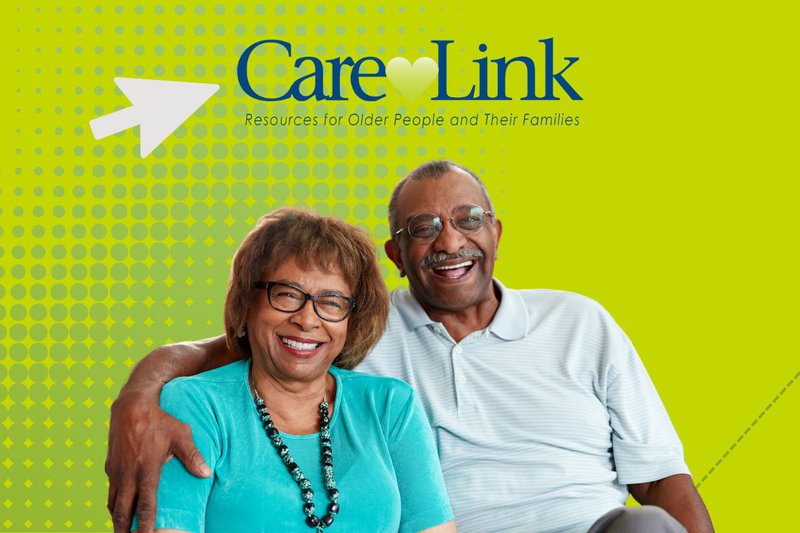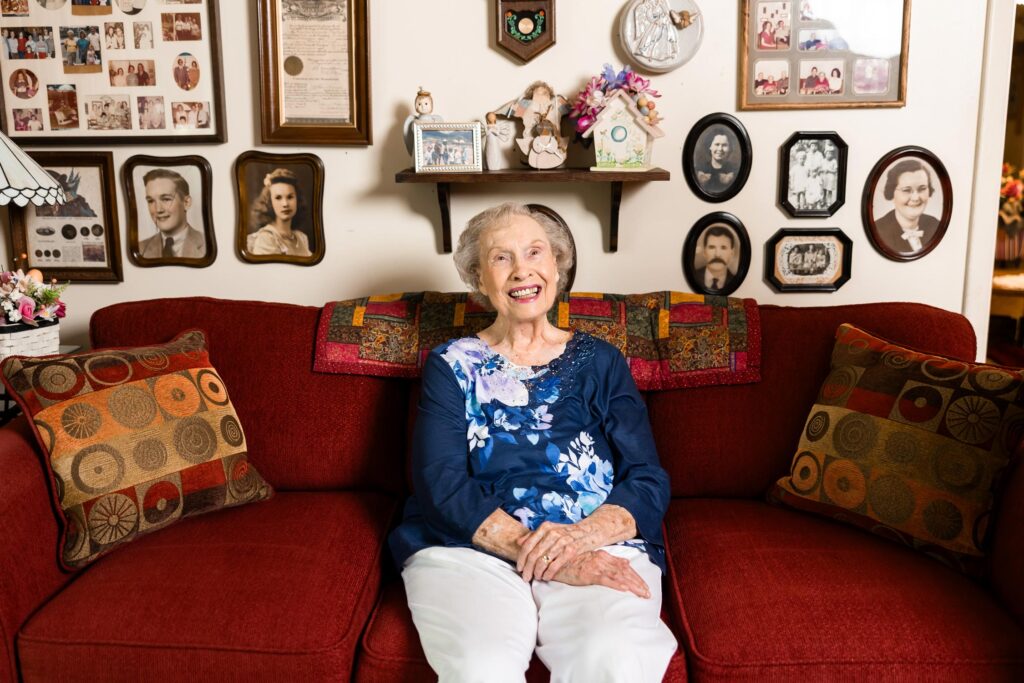Falls are the leading cause of injury for older adults—and they’re often preventable. If you’re caring for an aging parent or loved one, the first step to keeping them safe at home is knowing where they’re most at risk. From dim lighting to slippery floors, small changes to home safety for seniors can make a big difference.
Key Takeaways:
- Most in-home falls are caused by loose rugs, wet floors, and cords across walkways (CDC).
- Improve lighting with LED bulbs, nightlights, and motion-sensor fixtures, especially in halls and bathrooms.
- Use non-slip flooring and low-pile carpet; avoid shiny tile or unsecured rugs.
- Install grab bars near showers, toilets, beds, and favorite chairs; screw them into wall studs.
- Key bathroom tools: non-slip mats, raised toilet seats, shower chairs, and grab bars.
- Safety tech: Fall-detecting medical alert devices, smart lights, door alarms, voice assistants, and pill dispensers.
- Use home safety checklists and hire occupational therapists to assess risks.
- Install ramps, widen doorways to 36”, and keep 3-foot-wide walkways for mobility needs.
- Emergency planning: kits, care plans, escape routes, and contact lists must be in place.
- Fire safety: use smoke and CO detectors; prevent kitchen fires by staying in the room.
- For cognitive conditions: secure exits, label rooms, use GPS trackers, and simplify spaces.

Creating a Safer Home: Fall Prevention and Home Safety for Seniors
As people age, ensuring home safety for seniors becomes increasingly important for maintaining independence and overall well-being. Among all the risks older adults face, falls remain the leading cause of injury in the home. However, with careful planning, thoughtful design changes, and a proactive mindset, many of these risks can be significantly reduced or even eliminated entirely. Fortunately, it's never too early to begin making changes that support aging in place.
With this in mind, let’s explore the most effective ways to prevent falls and boost home safety for seniors, starting with the areas of greatest concern.
Home Safety for Seniors: First Steps in Fall Prevention Begin With Floors, Lighting, and Walkways
The most significant risk to aging adults at home is falling, and this often begins with everyday elements such as floors, poor lighting, and cluttered paths. In fact, according to the CDC, more than 3 million adults aged 65 and older are treated in emergency departments for fall-related injuries every year.
Therefore, to begin improving home safety for seniors, start by evaluating the floor plan. As you proceed, walk through each room and hallway, paying close attention to rugs, cords, and slippery spots. Any area where feet touch the ground should be carefully reviewed.
Remove Common Tripping Hazards Inside the Home
Transitioning to safer flooring doesn’t have to mean a full remodel. Instead, remove loose throw rugs or secure them with double-sided tape. If rugs are necessary, choose those with a rubber backing to hold them in place.
Next, prioritize cleaning up spills immediately. Wet spots are easy to overlook but can be extremely dangerous. Power cords should never stretch across walkways. Instead, run them along walls or behind furniture.
Keep all floors clear of clutter like shoes, laundry baskets, or pet toys. For those using mobility aids, such as walkers or canes, wide and flat paths are essential. Consider a full fall prevention checklist to identify specific trouble spots throughout the home.
Home Safety for Seniors: Improve Lighting to Reduce Fall Risks
Many falls happen simply because seniors can’t see hazards in their path. That’s why enhancing lighting is a fundamental part of home safety for seniors. Use bright, white LED bulbs in all rooms for better visibility and longer lifespan.
To further reduce risks:
- Add nightlights in bedrooms, bathrooms, and hallways.
- Install motion-sensor lights to avoid fumbling for switches in the dark.
- Make sure lamps are within easy reach of beds and chairs.
- Place light switches at both ends of stairs and long hallways.
These small lighting improvements can make a big difference, especially for seniors with vision changes.
Choose the Right Flooring for Safety and Stability
Smooth yet textured surfaces offer the best grip. Wood or tile floors can be safe if they’re not glossy or slippery. Non-slip wax or anti-slip mats can significantly increase traction.
While carpet is soft, it may pose a tripping hazard. Opt for low-pile carpet, ensuring all edges are secured, and avoid rugs unless firmly in place.
In high-risk areas like kitchens and bathrooms, use rubber mats and clean up water immediately. Even with safety rugs, wet floors remain a major hazard. Managing home safety for seniors involves attention to these details.
Clear Walkways and Secure Cords to Prevent Trips
Cords running across the floor are one of the most overlooked dangers in the home. Tape down any cords that must cross a room or reroute them along walls. Lamp and appliance cords should never block common walking paths.
Clutter-free walkways are critical for mobility. Keep hallways and doorways free of obstacles, and ensure there’s enough clearance for mobility aids. When flooring changes from one type to another, like carpet to tile, use bright marking tape to highlight the transition.
For even more guidance, explore CareLink’s HomeCare services to get personalized support tailored to each home.
Add Grab Bars and Mobility Tools Where Needed to Ensure Home Safety for Seniors
Installing grab bars is one of the simplest and most effective ways to improve stability. These should be placed not only in bathrooms but also near beds, chairs, and any area where sitting or standing occurs regularly.
Be sure to:
- Use wall-mounted bars screwed into studs—not suction bars.
- Avoid using towel racks for support.
- Choose tools that blend into the home’s design for comfort and dignity.
In addition to grab bars, consider using walkers, canes, and bed rails. These aids should be professionally fitted and used daily, not just occasionally. Other helpful devices include lift chairs, raised toilet seats, and shower chairs—all of which support mobility and reduce fall risks.
For seniors living alone, a medical alert device with fall detection can be life-saving. It ensures help is available at the press of a button in the event of a fall.
Make Bathrooms One of the First Areas to Improve in Home Safety for Seniors
Bathrooms are small and slippery, making falls more likely. That’s why this room should be a top priority when addressing security at home..
Add These Essential Safety Tools:
- Grab bars near the toilet and inside the tub or shower.
- Non-slip mats both inside the tub and on the floor.
- Shower chairs with rubber feet and adjustable legs.
- Raised toilet seats with side handles for support.
Screw-mounted grab bars are always more reliable than suction models, which can pop off under pressure. Rubber mats with drainage holes help maintain grip and reduce standing water.
Prevent Burns and Reduce Slipping
Hot water is another hidden danger. Set your water heater to below 120°F to avoid scalds. This small adjustment protects delicate skin without sacrificing comfort.
A handheld showerhead helps reduce splashing and makes seated bathing easier. For those with mobility concerns, a transfer bench or walk-in shower can create a safer and more accessible bathing experience.
Explore more bathroom safety tips from the National Institute on Aging.
Rearrange the Home for Better Mobility
For seniors to feel truly at ease, they must be able to move freely throughout the home. If fear of falling limits mobility, the home must be adapted accordingly.
Start by rearranging furniture to create clear, three-foot-wide walkways. Remove extra end tables, stools, and floor clutter. Use storage bins or shelves to keep items off the floor and out of the way.
Widening doorways to at least 36 inches can improve access for wheelchairs and walkers. Although this may require minor remodeling, a certified aging-in-place contractor can recommend practical, affordable upgrades to help ensure full-scope home safety for seniors.
Make Staircases Safer and More Accessible
Stairs pose one of the greatest fall risks. To improve staircase safety:
- Install sturdy handrails on both sides.
- Add textured treads or anti-slip grip tape.
- If possible, add a small ramp for short steps.
- For longer stairs, install a stair lift with safety features like seatbelts and rotating seats.
If major changes aren’t possible, try rearranging the home so all essential rooms—like the bedroom, kitchen, and bathroom—are on the main floor. This reduces the need to use stairs daily.
Replace Door Handles and Improve Daily Comfort
Daily tasks often become harder with age. Round doorknobs and twist faucets can be difficult for arthritic hands. Swap them for lever-style handles that require less effort.
Keep in mind that vision also changes with age. What once seemed well-lit may now feel dim. Increase brightness in all rooms using LED bulbs. Install motion-sensor lights near beds and toilets for nighttime safety. Place light switches at both ends of stairs and long hallways to reduce nighttime hazards.
Keep the Home Safe Without Sacrificing Style
Some worry that safety upgrades will make their home feel sterile or clinical. However, many modern safety products are both stylish and functional. Choose grab bars and fixtures in finishes that match your decor. Let loved ones help choose colors or styles that make the home feel warm and personal.
Early changes may feel like a loss of independence, but they actually support freedom and confidence. For more ideas on maintaining both safety and comfort, explore CareLink’s full list of services.
Ready to Create a Safer Home?
Take the First Step Toward a Safer Future
Now is the perfect time to make your home safer, more comfortable, and better suited for aging in place. Whether you're concerned about fall risks or simply want to plan ahead, CareLink is here to help.
Our team specializes in supporting seniors and family caregivers every step of the way.
Contact CareLink Today to get started on your safety plan.





